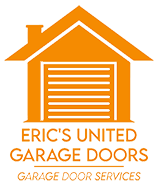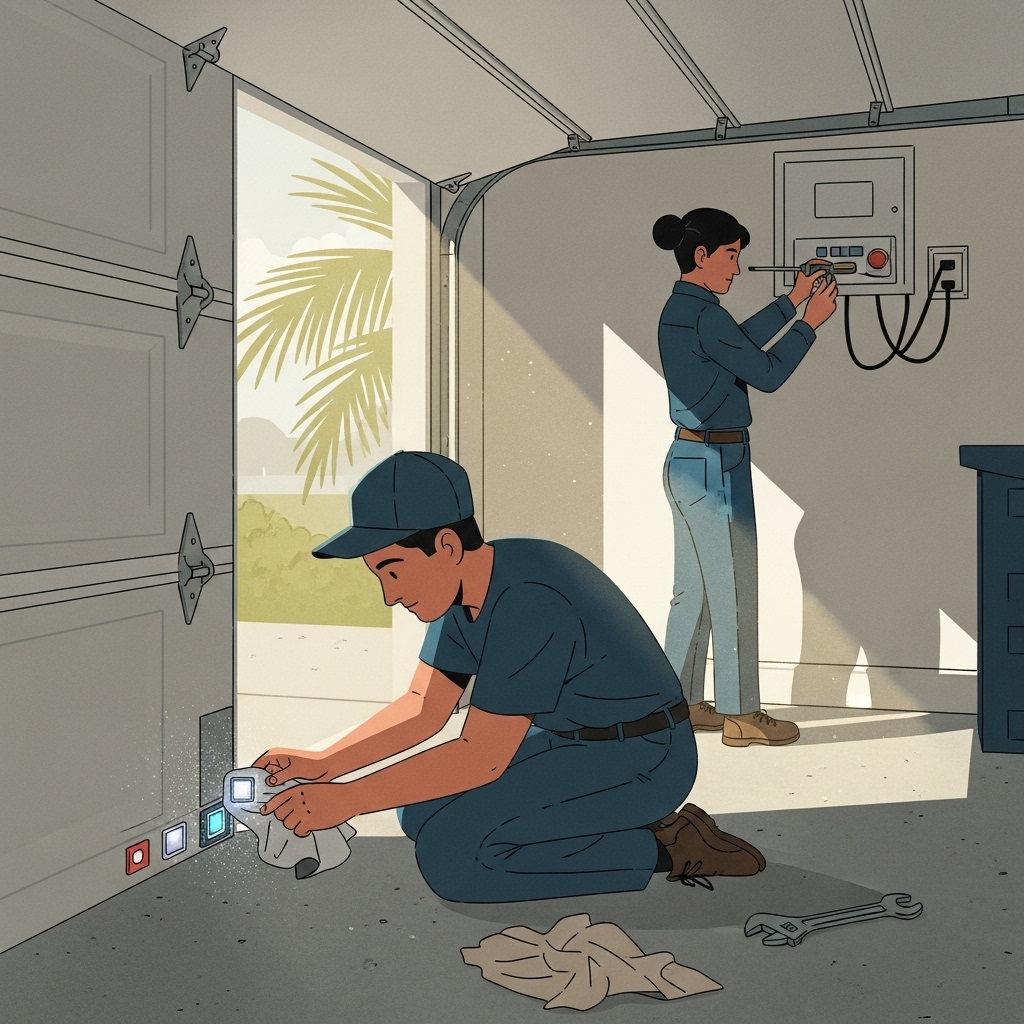Introduction
When your garage door misbehaves in Palm Beach County, Florida, a calm, step-by-step troubleshooting approach can quickly separate simple fixes from issues that require professional attention. Between coastal humidity, salt-laden air, and frequent use, even a well-installed system can develop hiccups such as noisy travel, unexpected reversals, or stubborn remotes. This guide walks you through common symptoms, safe checks you can perform, and the red flags that signal it is time to call an expert. If you prefer experienced hands from the start, arrange a local appointment with a reliable garage door service that understands the unique demands of our coastal communities from Jupiter to Boca Raton.
The goal is to help you solve simple problems quickly while protecting safety. You will learn how to evaluate sensors, power supply, balance, track alignment, and opener settings. With a little patience and a clear method, most nuisance issues can be diagnosed within minutes.
Safety First
Before any troubleshooting, prioritize safety. Keep hands clear of pinch points between door sections and hinges. Do not loosen set screws or attempt to adjust torsion or extension springs; these are high-tension components that require professional tools and training. Disconnect power to the opener before working near the motor head or drive system. Use a sturdy ladder and wear eye protection if you need to access overhead components.
If the door is stuck partially open and you suspect spring or cable failure, do not force it. Secure the area, avoid walking under the door, and call a professional. Safety-conscious decisions prevent injuries and additional damage.
Symptom 1: The Door Will Not Open or Close
Start with the basics. Confirm power to the opener—check the outlet, circuit breaker, and any GFCI reset. If the opener lights are off, try a different device in the same outlet to verify power. Next, inspect the photo-eye sensors. If they are misaligned, dirty, or blocked, the opener will not close. Clean the lenses with a soft cloth and ensure they face each other at the same height.
Look for lock features on wall controls that disable remotes. Some wall units have a vacation lock that prevents remote operation. If the opener hums but does not move the door, the drive system may have a stripped gear or broken belt or chain connection, or the door may be off balance. At this point, stop and request professional help if you cannot identify a simple obstruction or sensor issue.
Symptom 2: The Door Reverses or Stops Midway
Unexpected reversal typically points to sensors or increased resistance. Verify sensor alignment; even a small nudge can skew the beam. Check for debris in tracks or a loose fastener that allows a track to shift. Listen for scraping noises that indicate rubbing. If you recently adjusted force or travel settings, restore manufacturer defaults and test again.
In humid weather, expansion and minor swelling can change how the door moves. Light lubrication on hinges and roller bearings can reduce friction, but if the door still struggles, professional alignment and balance checks are the safest path forward.
Symptom 3: Excessive Noise During Operation
Squeaks, rattles, and grinding are your early warning system. Begin by tightening accessible fasteners on hinges and brackets. Wipe tracks to remove sand and grit and avoid applying heavy grease to the rails—rollers should roll, not slide. Use a garage-door-rated silicone or lithium lubricant on hinge pivots and roller bearings. Cycle the door several times to distribute.
If noise persists at the same spot, inspect rollers for flat spots or cracked housings. Worn rollers and misaligned tracks generate repeated clatter. Nylon rollers and a careful alignment tune can transform an attached garage from disruptive to peaceful.
Symptom 4: Remote or Keypad Not Working
Replace remote batteries and ensure you are within range. For keypads, check the battery and verify that weather exposure has not damaged the unit. Reprogramming may be necessary after power outages or if codes were cleared. Confirm that the opener’s antenna is hanging freely and not tucked into the housing. LED bulbs in the opener light can sometimes interfere with radio reception; use bulbs recommended by the manufacturer.
If multiple remotes fail simultaneously, investigate power, lock features, or a tripped GFCI. After storms, power blips can scramble settings. Reprogram and test again. Persistent communication issues may require opener diagnostics or replacement of accessory receivers.
Symptom 5: Door Feels Heavy or Slams Shut
Disconnect the opener and lift the door manually to the halfway point. A balanced door should hover. If it falls or is difficult to lift, the springs likely need professional adjustment or replacement. Operating an unbalanced door strains the opener and risks sudden drops. Do not attempt spring work yourself; the stored energy in torsion or extension springs is dangerous without training and proper tools.
If balance is acceptable but the door still feels rough, check rollers and tracks for damage or debris. Small dents or crushed track sections create drag and should be corrected by a technician to restore smooth travel.
Symptom 6: Opener Runs but the Door Does Not Move
First, ensure the emergency release is engaged. If the trolley is disengaged, the opener will move without pulling the door. Reconnect according to the opener’s instructions by aligning the trolley with the carriage and cycling the door. If the release is engaged and the door still does not move, inspect the drive system. Belt or chain slack, a stripped gear, or a failed sprocket could be at fault.
Because these parts are near moving mechanical and electrical components, proceed cautiously. If you are not comfortable, stop and request professional service. Preventing further damage is better than guessing at a fix.
Symptom 7: Drafts, Water, or Pests Enter the Garage
Check the bottom seal for cracks or compression that leaves gaps. Side and top seals can become brittle in Florida sun and should be replaced when they no longer flex. Ensure the threshold is clean and level so the seal contacts evenly. In heavy rains, wind can push water under compromised seals and into the garage.
Seal maintenance is simple but impactful. Fresh weather-stripping improves comfort, reduces dust and sand intrusion, and lowers stress on the opener by preventing sticking caused by moisture-swollen edges.
Environmental Factors in Palm Beach County
Salt air accelerates corrosion on metal parts, including springs, cables, and tracks. Regular wiping and light protective lubrication slow rust formation. Afternoon heat and humidity thin lubricants and can affect opener electronics. Storms may shift sensors or deposit debris along tracks. Incorporate quick inspections after severe weather and schedule periodic tune-ups to catch developing issues early.
Homes closer to the ocean or Intracoastal often benefit from corrosion-resistant hardware and sealed roller bearings. Component selection and care routines tailored to the coast deliver the quiet reliability you expect.
Basic Maintenance That Supports Troubleshooting
Simple habits make troubleshooting easier. Keep a small log of noises, dates, and any changes you notice. Wipe tracks monthly and lightly lubricate hinge pivots and roller bearings every few months. Test auto-reverse systems regularly by interrupting the beam and using a small piece of wood under the closing door. Clean sensor lenses and confirm they are aligned at the same height and angle.
These tasks create a stable baseline. When something goes wrong, you will know it is new and can describe changes accurately to a technician if needed.
When to Stop DIY and Call a Pro
Stop immediately if you see frayed cables, gaps in torsion springs, bent tracks, or a door that will not stay at mid-height when disconnected from the opener. Electrical burning smells, repeated error codes, or an opener that overheats also warrant a professional visit. If troubleshooting requires force increases to overcome resistance, pause; more force is not the solution to mechanical binding.
A trained technician brings calibrated tools, parts, and experience to restore balance, alignment, and safety—especially important in our coastal climate where corrosion and humidity play a constant role.
FAQ
Q: Why does my door close then pop back open? A: Photo-eye sensors are likely misaligned or dirty, or the door is encountering resistance from debris or misaligned tracks. Clean and realign sensors and inspect tracks for obstructions.
Q: Is heavy grease good for quieting a noisy door? A: No. Heavy grease attracts dirt and turns into abrasive sludge. Use a silicone or lithium-based lubricant made for garage doors, applied lightly.
Q: Can I change my own springs? A: No. Spring work is hazardous. Professional tools and training are required to adjust or replace torsion or extension springs safely.
Q: What should I do after a storm? A: Inspect for sensor misalignment, debris in tracks, and water intrusion at seals. Test auto-reverse, listen for new noises, and schedule a tune-up if anything feels off.
Q: Why is my opener light flashing? A: Flash codes often indicate sensor faults, travel limit issues, or obstruction. Consult the opener manual and verify sensors and alignment before adjusting settings.
Q: Are nylon rollers worth it? A: For many attached garages, nylon rollers with sealed bearings reduce noise and resist corrosion, delivering smoother travel in coastal environments.
Q: How can I prevent recurring issues? A: Maintain a monthly visual check, keep sensors clean, wipe tracks, apply light lubrication, and schedule periodic professional inspections to catch wear early.
Take the Next Step Toward Reliable Operation
Effective troubleshooting blends patience with practical checks. By following the steps in this guide, you can resolve many nuisance problems quickly and recognize when a hands-on expert is the safer choice. If you want local, climate-aware support that restores smooth, quiet performance across your system, book a professional garage door service and enjoy dependable operation in any season.

